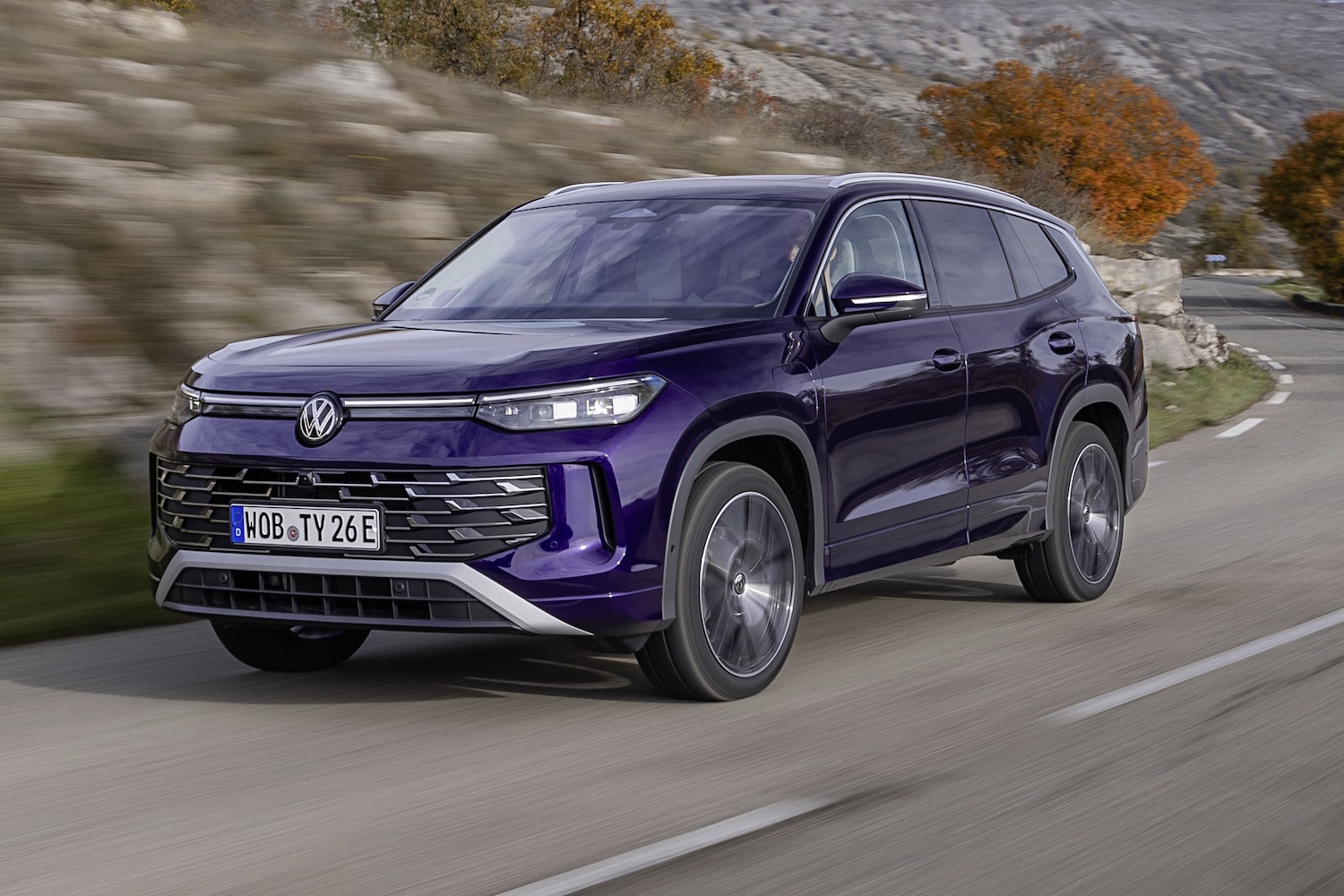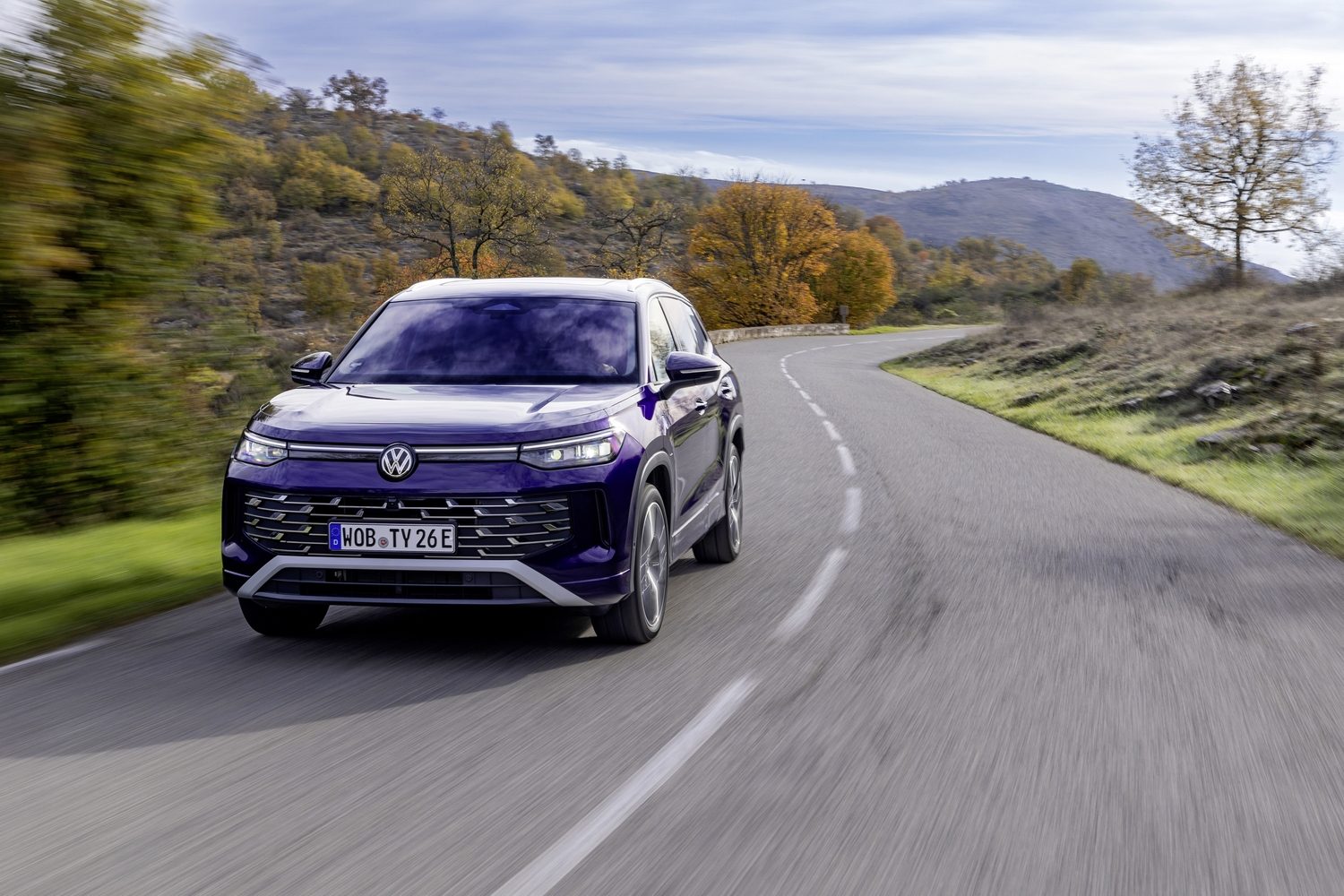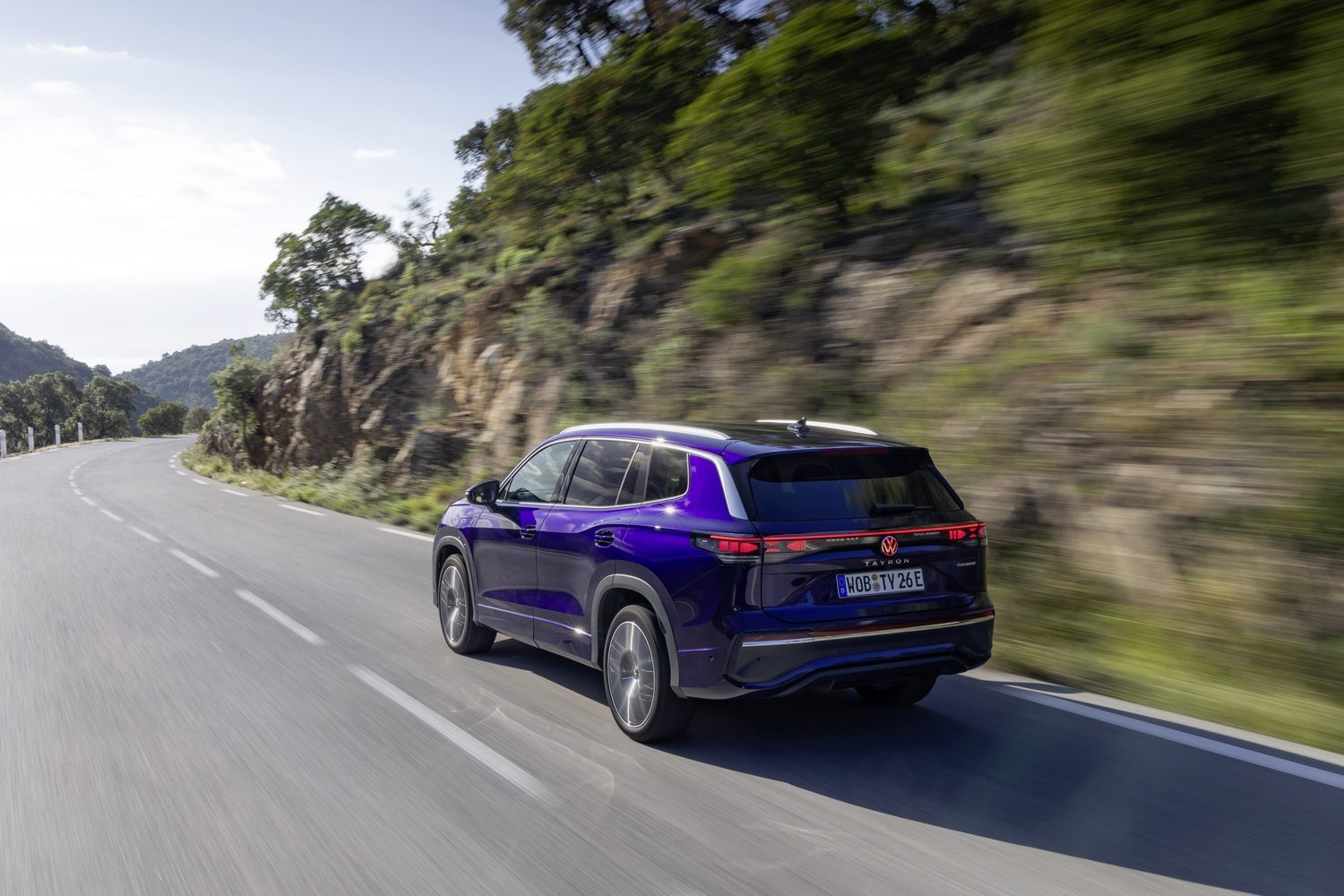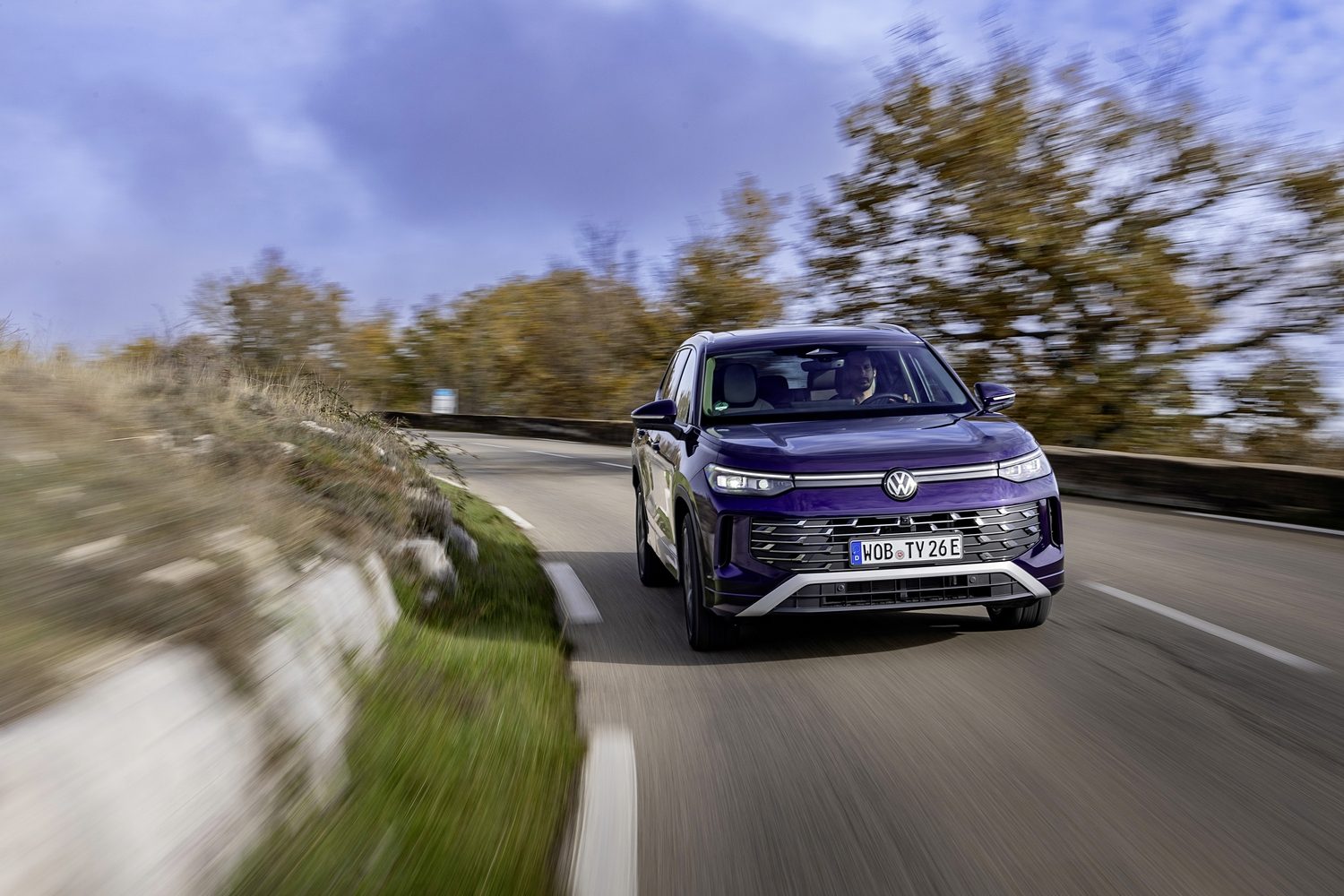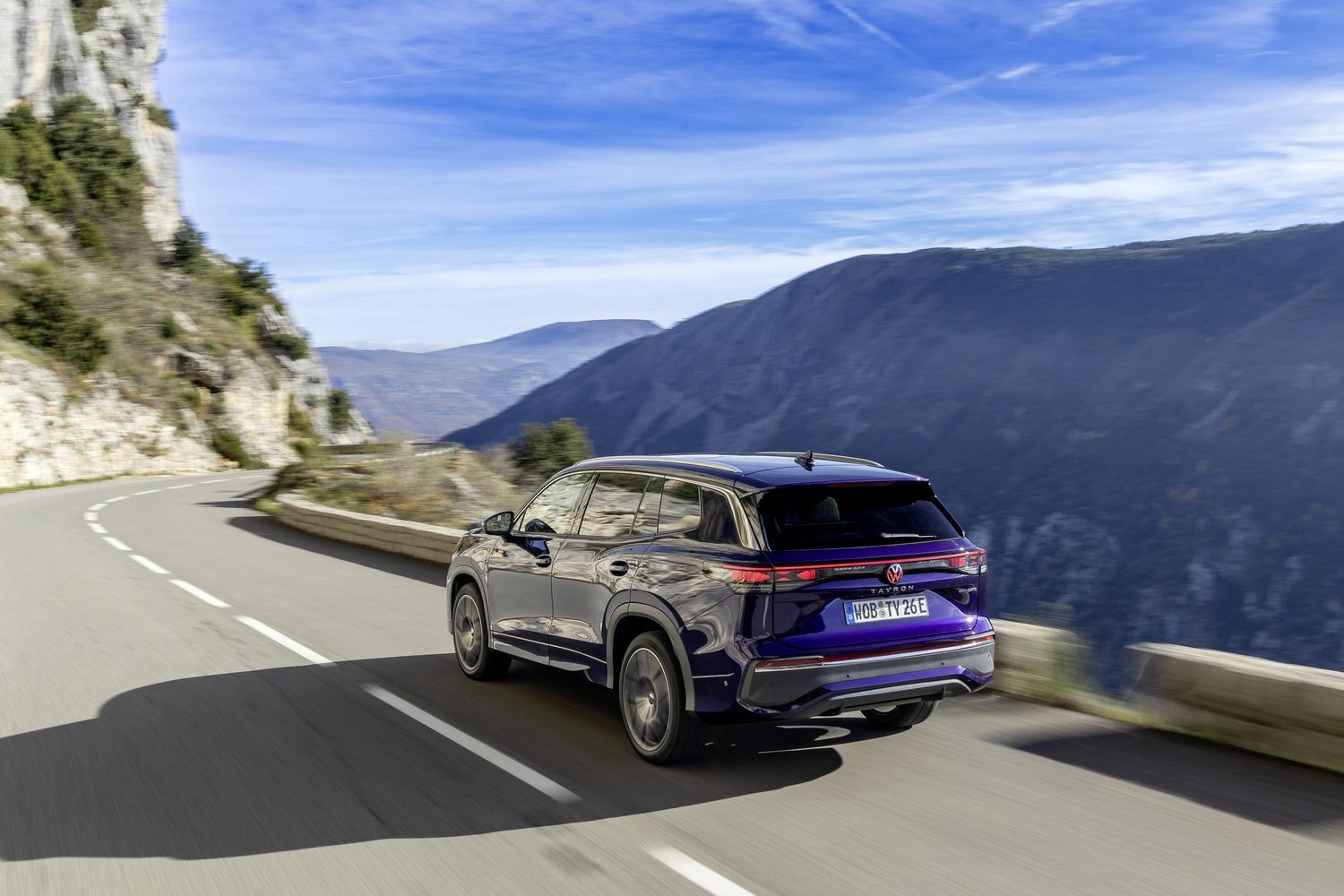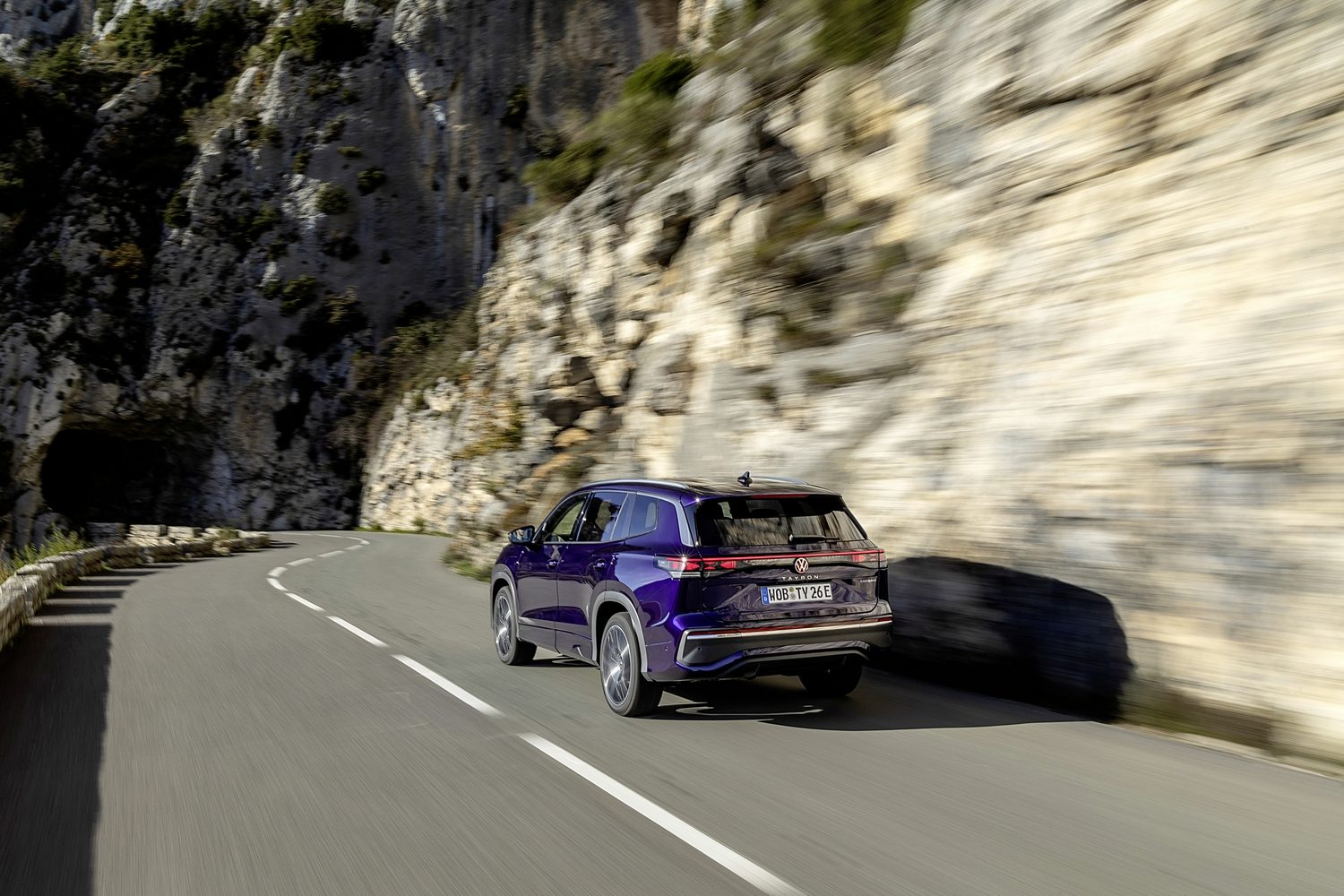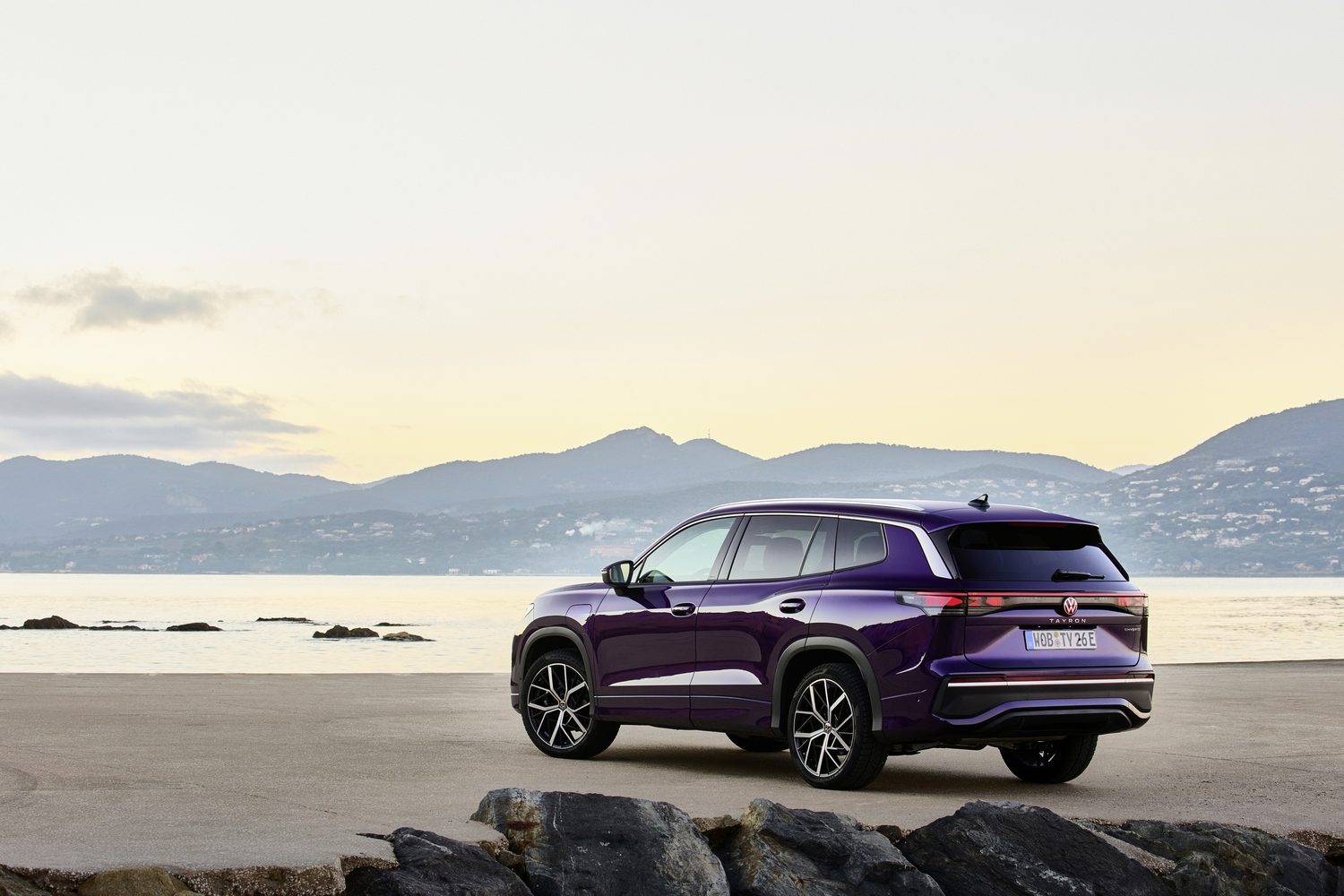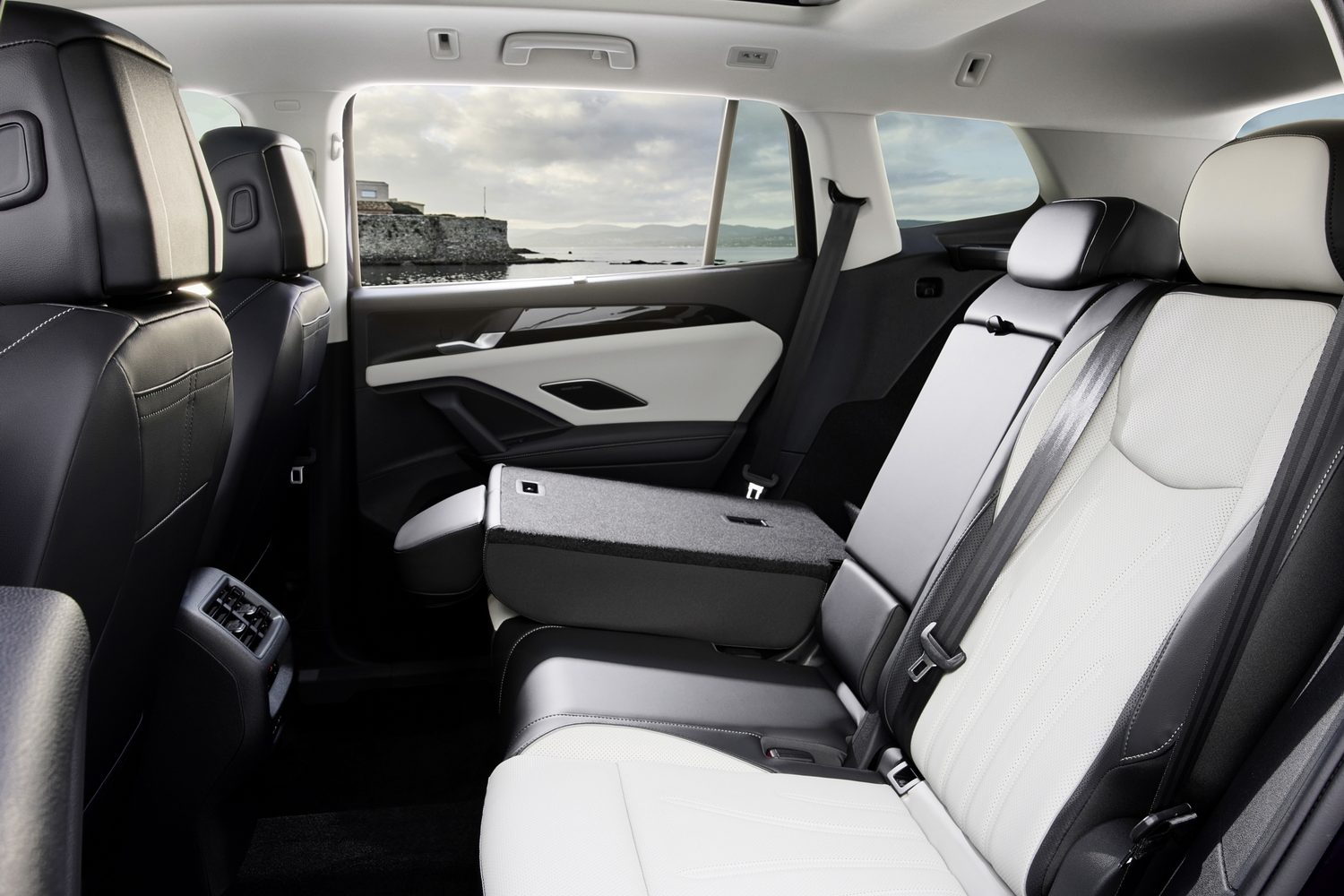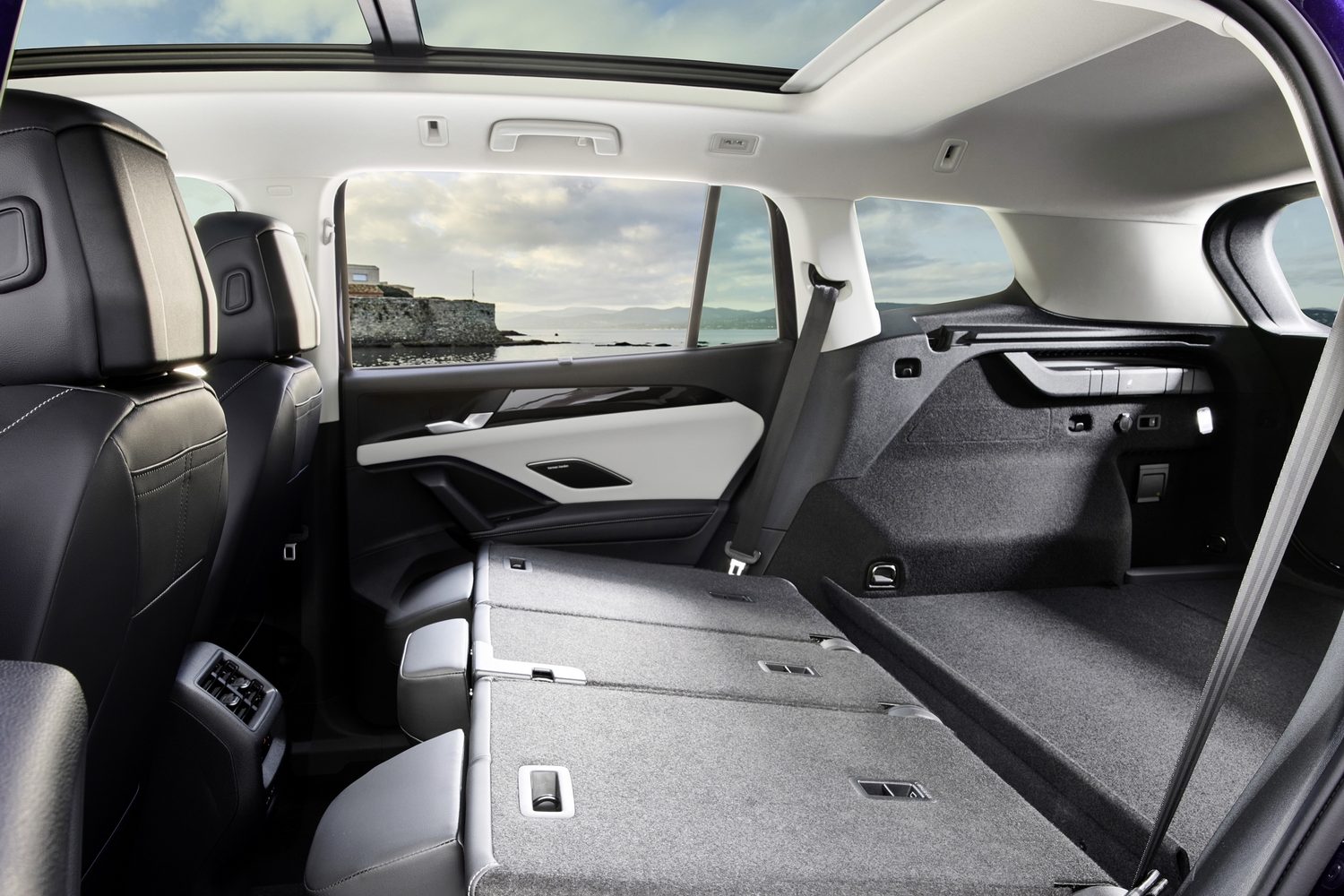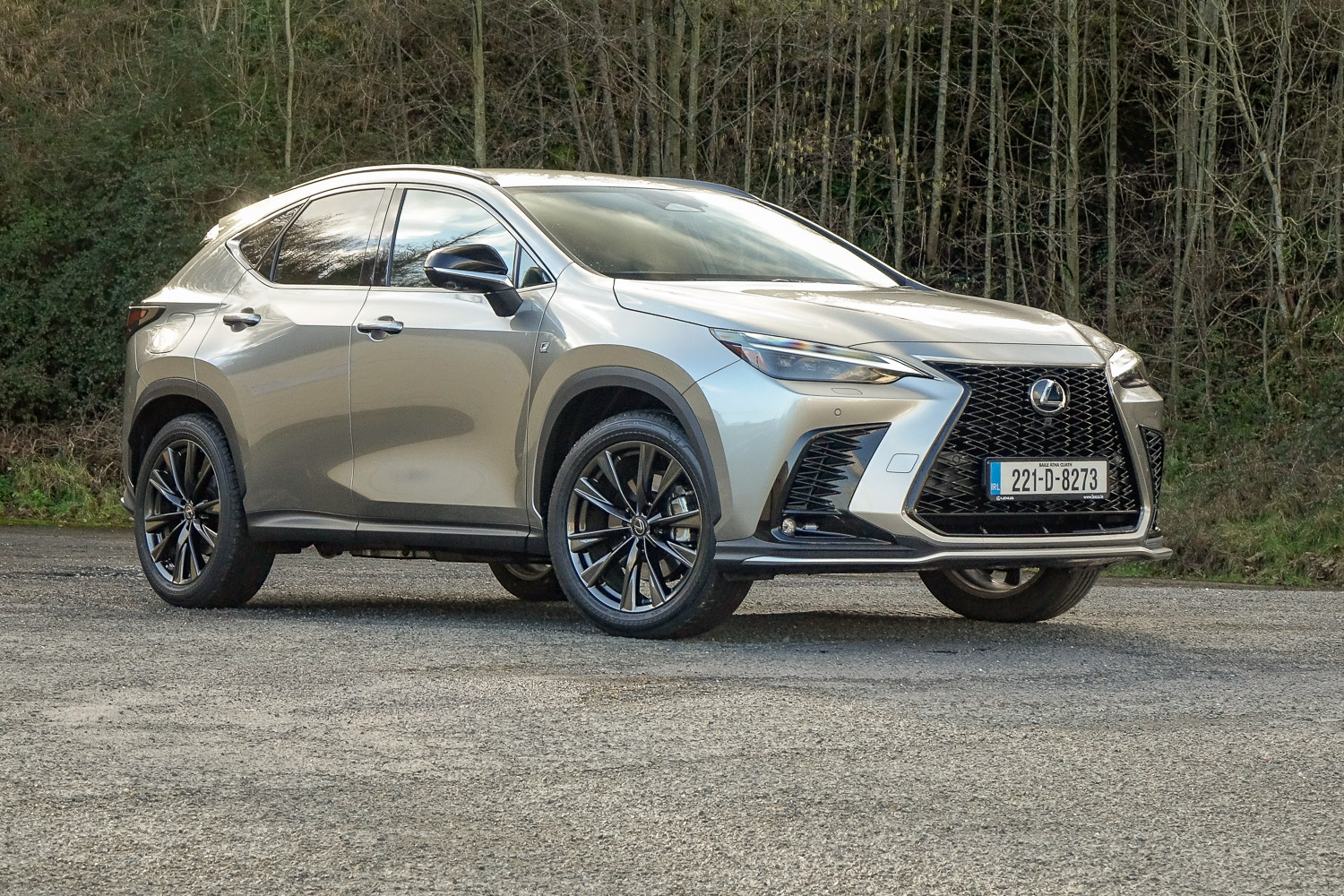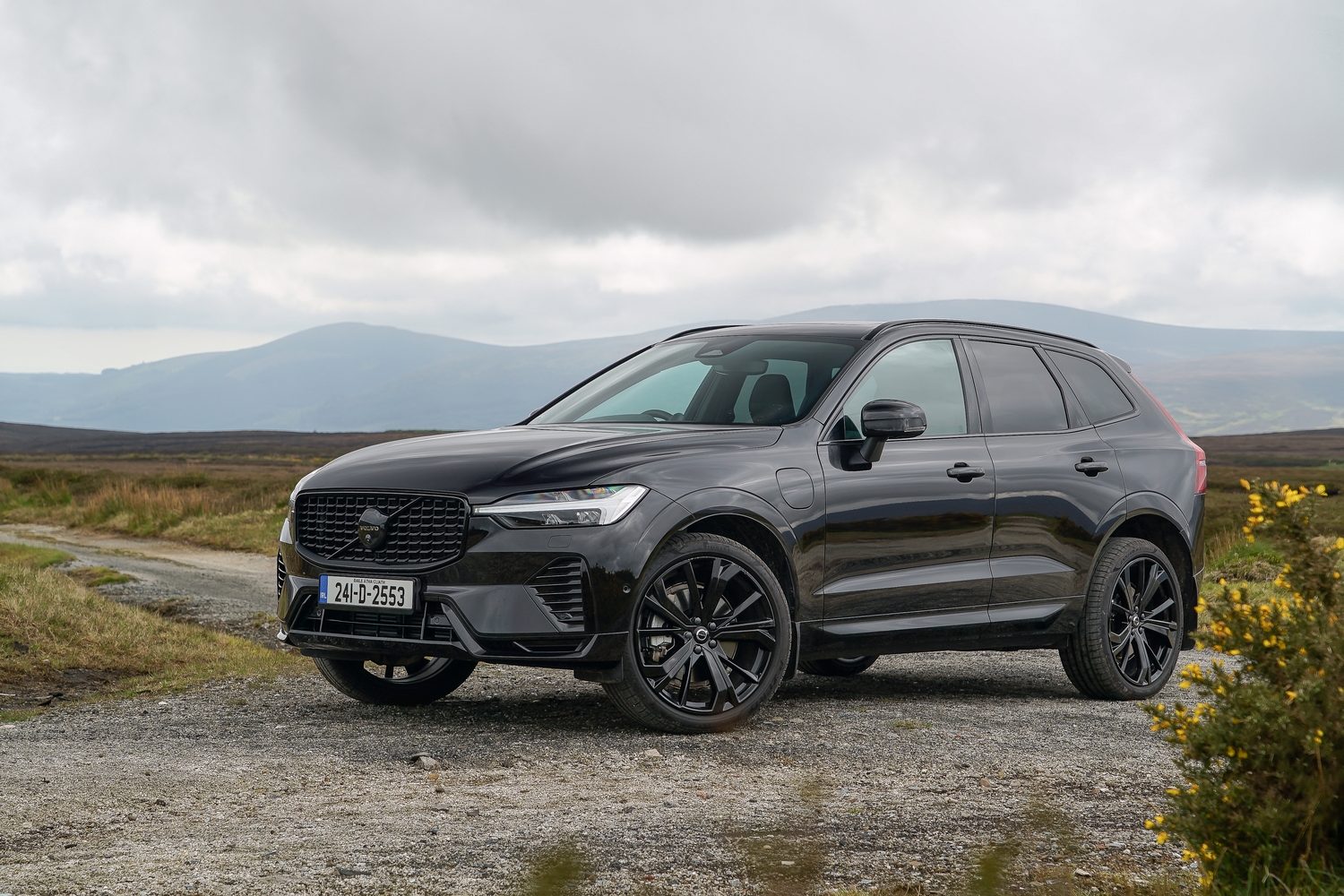Introduction to the 2025 Volkswagen Tayron eHybrid
The Volkswagen Tayron (pronounced tie-ron) is the newest addition to the German marque's portfolio of SUVs. It serves two purposes in replacing the seven-seat Tiguan Allspace and adding a long-range plug-in hybrid to the lineup. Now, we mention seven seats; however, if you want that plug-in hybrid version, it only comes with five. Blame the battery taking up too much space for that one. There is a diesel version of the Tayron that offers a third row of seats.

We got behind the wheel of the Tayron eHybrid at its international launch in France to see how it performs in the real world.
Pros & Cons of the 2025 Volkswagen Tayron eHybrid
Pros: Usefully long electric range, lots of interior space
Cons: Only five seats in the PHEV
Exterior & Design of the 2025 Volkswagen Tayron eHybrid
• Sporty R-Line gets 19-inch wheels
• Unique styling
• Three specification grades
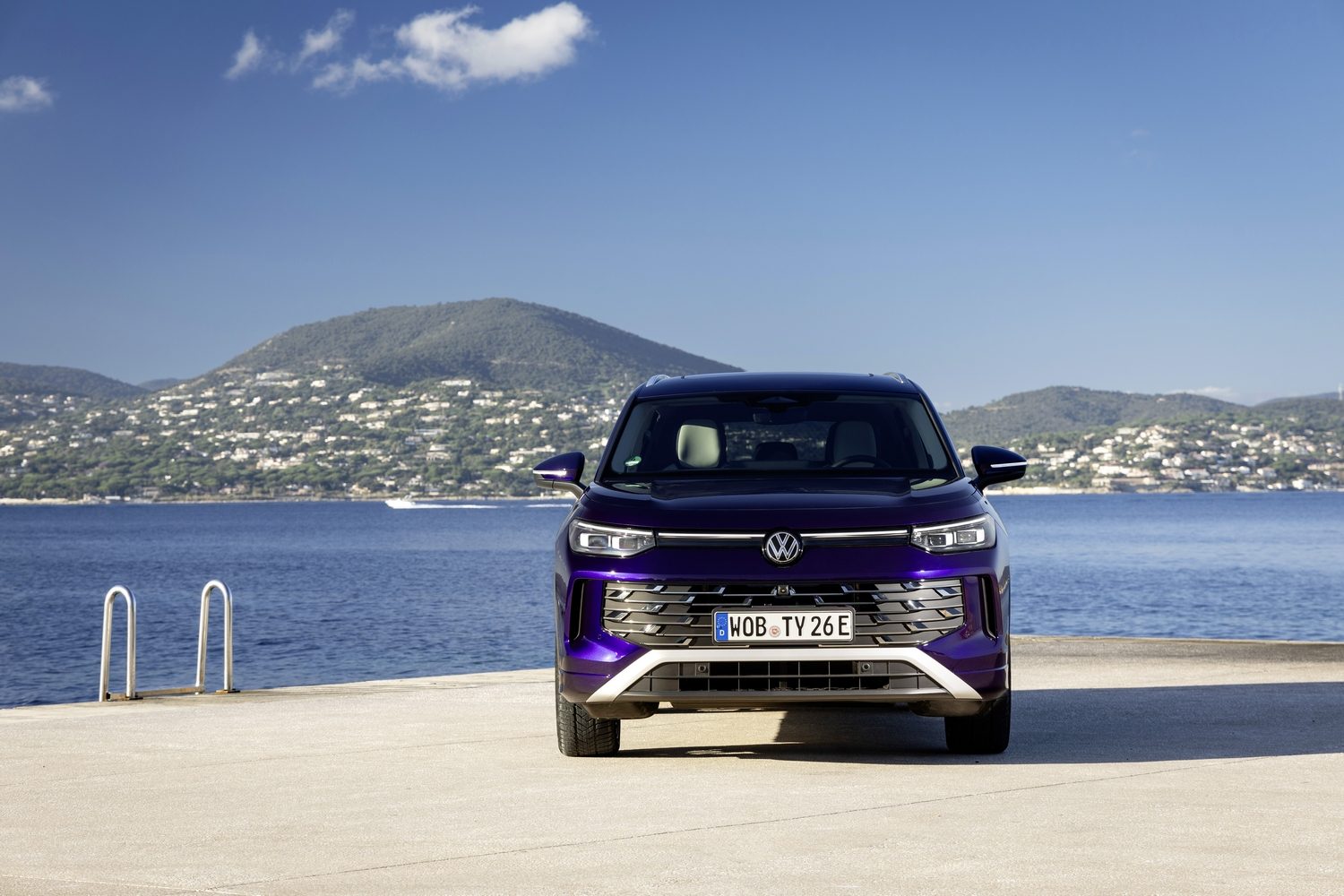
The Tayron's predecessor was the VW Tiguan Allspace, which was little more than a stretched Tiguan for it to offer a third row of seating. This time around Volkswagen wanted to create a standalone model to fill the gap between the Tiguan and Touareg, resulting in the Tayron. It still very much fits in with the Tiguan and Volkswagen's other models in terms of design, and its overall size and proportions work well. For reference, the key dimensions are:
Length: 4,792mm
Width: 1,853mm
Height: 1,688mm
Wheelbase: 2,788mm
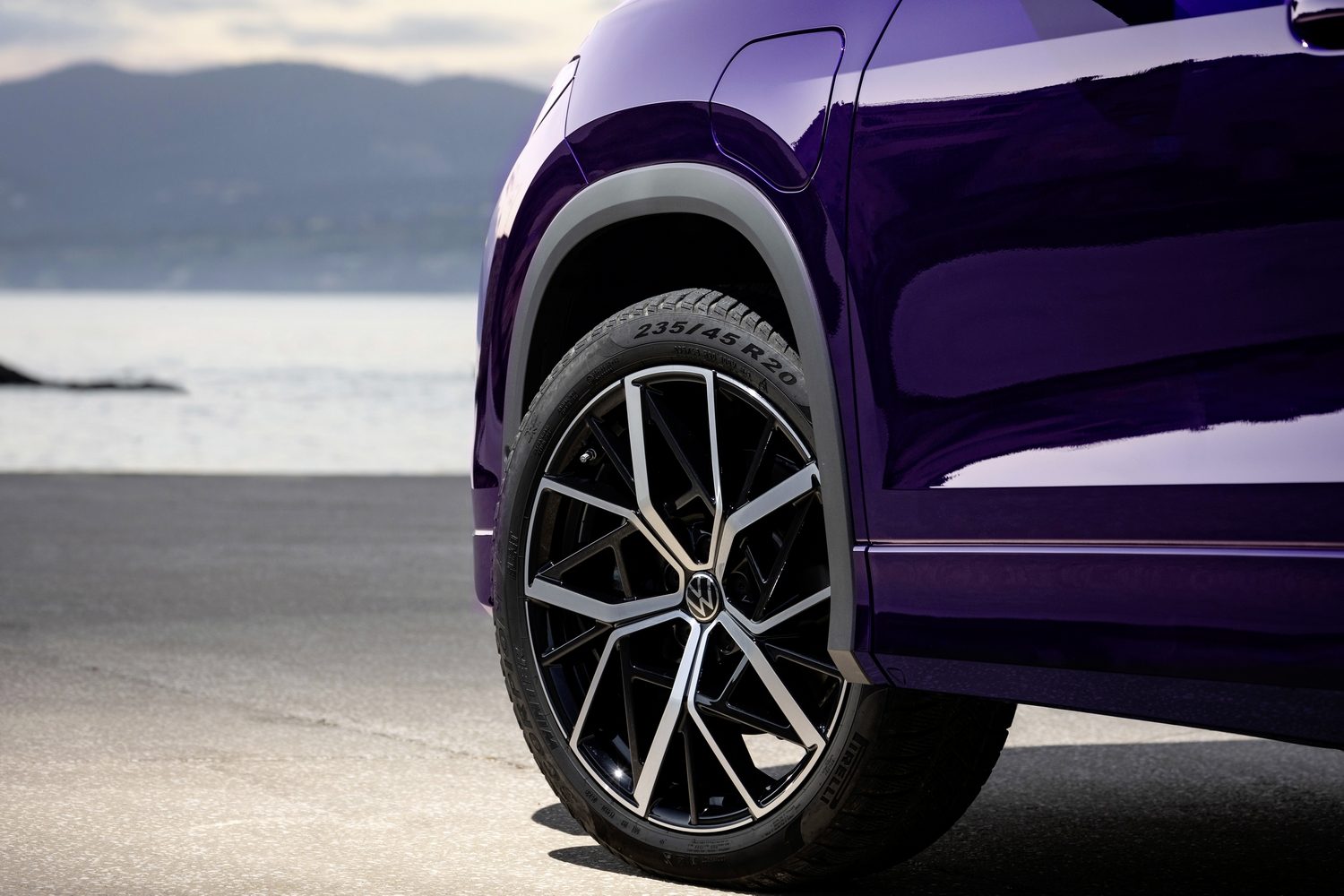
Buyers get the choice of three specification grades: Life, Elegance and R-Line. Each of these is easily distinguished visually, with the Life featuring a simpler front-end design and sitting on 17-inch alloy wheels.
The Elegance trim adds 19-inch alloy wheels and chrome details to the front, rear privacy glass and silver anodised roof rails. Meanwhile, at the top of the range, there's the R-Line, which gets a much sportier image, especially around the front. An optional R-Line Black Styling Pack adds 20-inch alloy wheels, black door mirrors, roof rails, the 'hockey stick' on the C-pillar and the Tayron lettering in black.
Interior, Practicality, Tech & Comfort of the 2025 Tayron eHybrid
• Plenty of boot space
• 15-inch touchscreen
• LED Matrix headlights
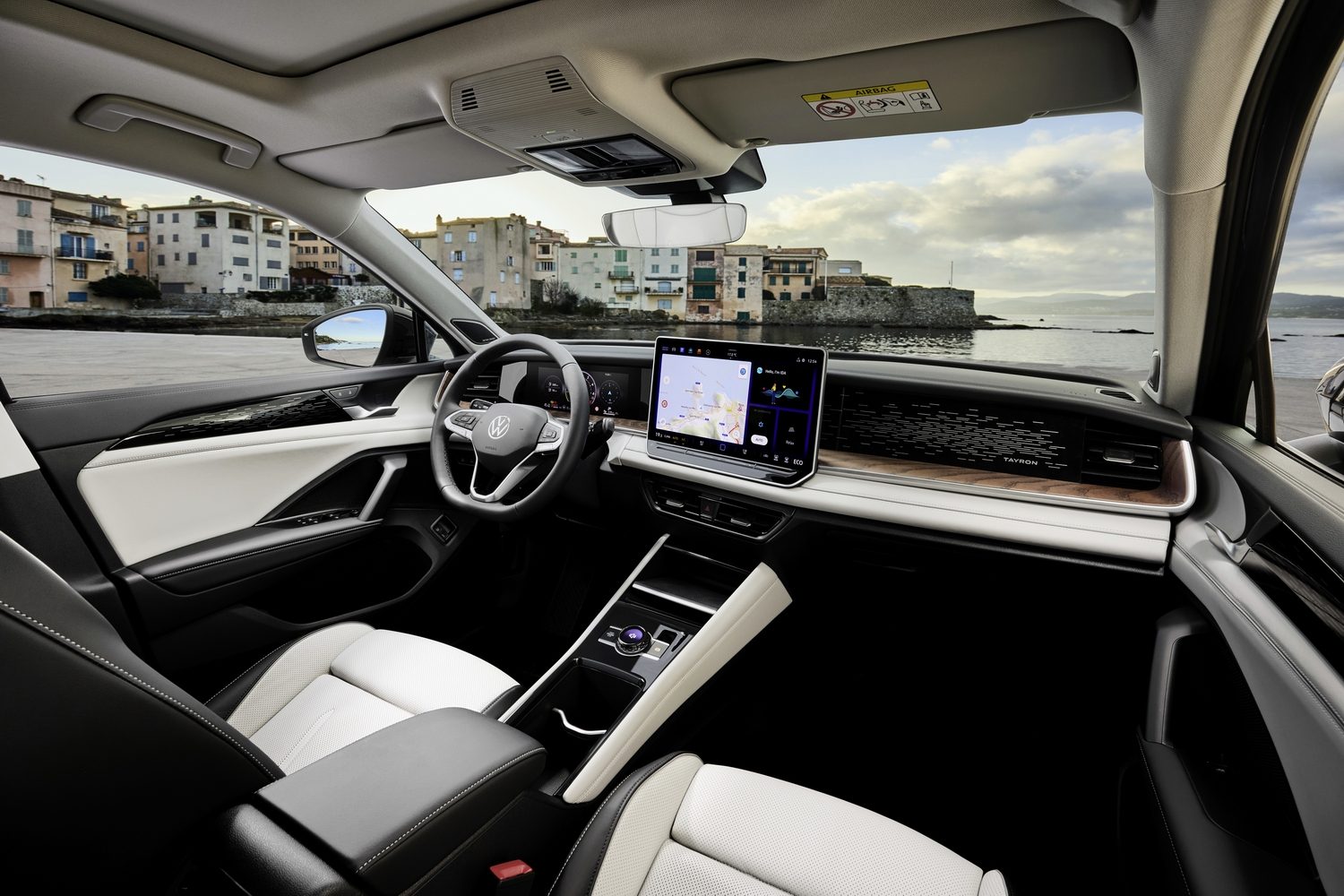
You won't spot many design differences on the inside of the Tayron when compared with the smaller Tiguan, but as that's also quite stylish inside, that's no bad thing. Our R-Line car is the Tayron at its best with regard to material quality and overall design, and the cabin quality is top notch.
All versions of the Tayron get a 10-inch digital screen for the instruments that drivers can configure to suit their preferences. Whether you want the more traditional circular rev counter and speedometer readouts or prefer to have the detail of the navigation map directly in front of you, it only takes the press of a button on the steering wheel to do so.
We mention a button on the steering wheel because, thankfully, Volkswagen has seen sense and has reverted to using tactile physical buttons on the multifunction steering wheel instead of the haptic touchpads that came in for much criticism. Buttons are much easier to use, especially when driving.
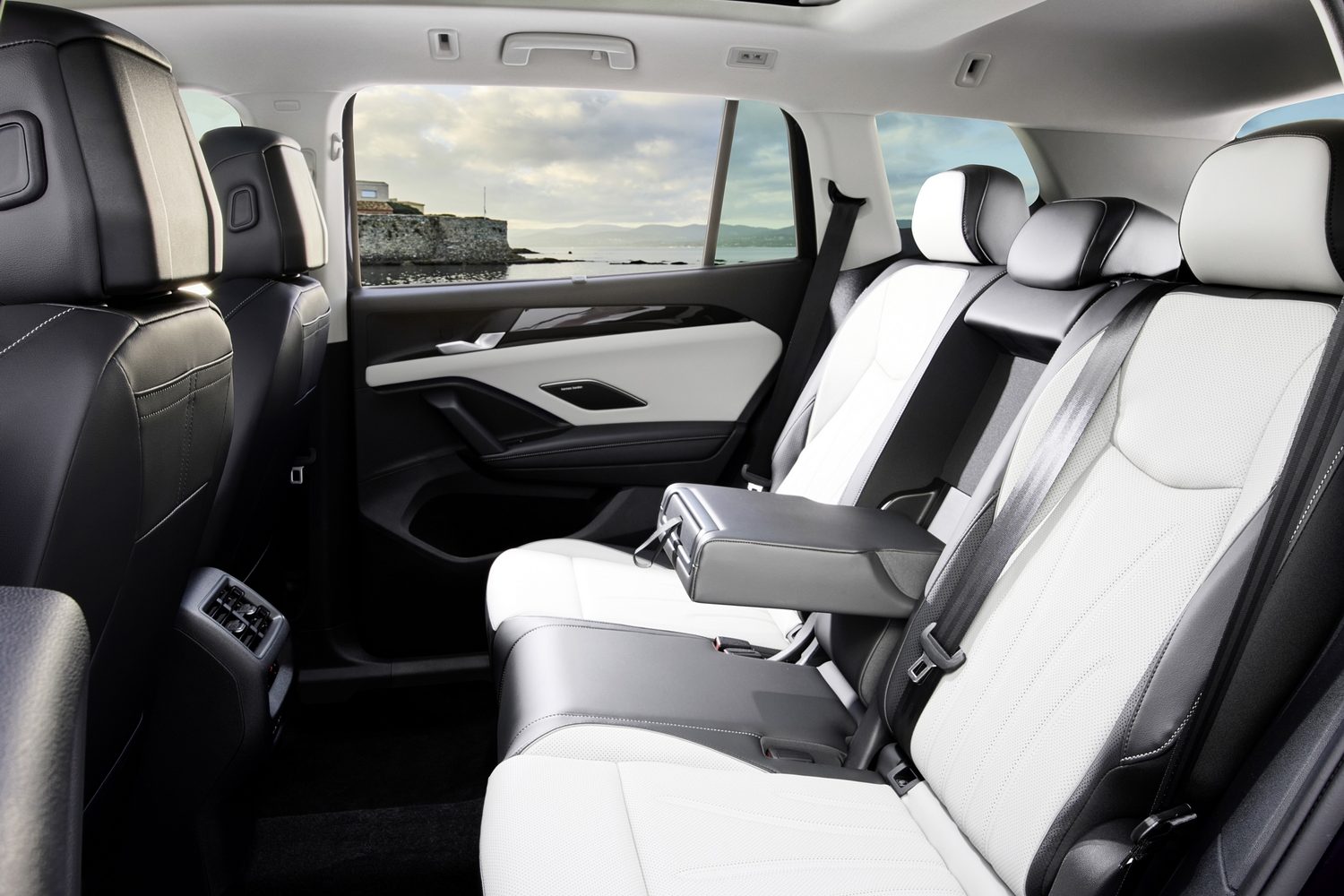
Supporting the main instrumentation is a colour head-up display that projects the car's speed, speed limit information and turn-by-turn navigation prompts directly into your field of view. The head-up display is optionally available as part of the Discover Pro Max package, which also upgrades the standard 12.9-inch infotainment touchscreen to a larger 15-inch display. Whichever screen you end up with, both Android Auto and Apple CarPlay are available wirelessly.
Other tech includes a digital voice assistant called IDA, which has ChatGPT integration to answer more of your questions. Along with the usual USB-C charge ports, there are two wireless charging pads in the centre console underneath a handy storage area.
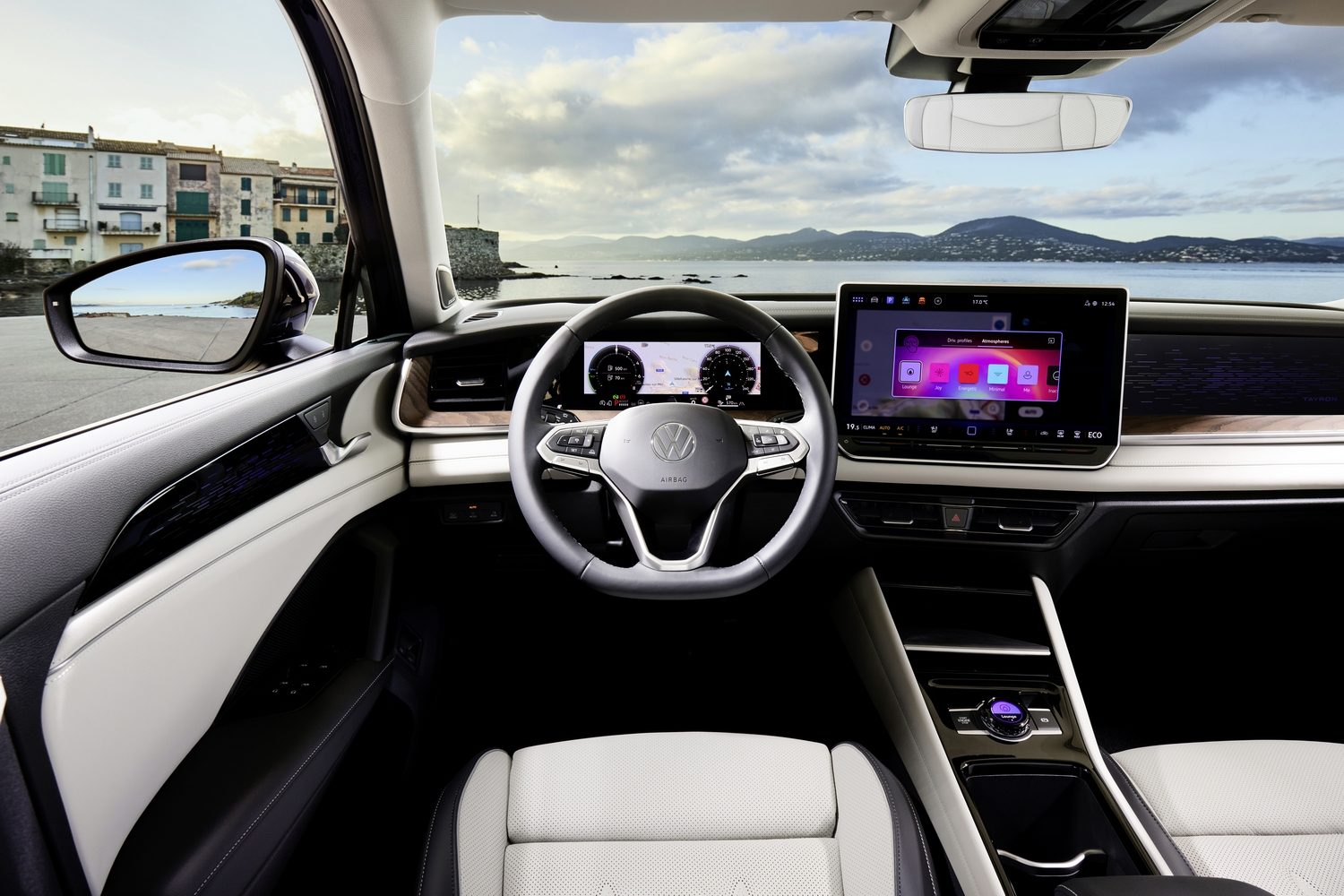
Building on the expected strips of ambient lighting, the fascia panel in front of the passenger and inserts on top of the doors contain detailed panels that allow light to filter through, and there are up to 30 different colours to choose from, including preset 'Atmospheres' as Volkswagen calls them. These can be activated through the rotary controller between the front seats which also allows adjustment of the stereo volume and switching between driving modes.
The overall layout of the cabin is good. It feels spacious, and the driving position is highly adjustable and provides a good view outwards. Rear passenger space is also on the generous side, with more than adequate amounts of legroom and headroom. The only real downside with the plug-in hybrid Tayron is that, due to the location of the drive battery (below the rear seats and boot), there is no way of packaging a third row of seats, which is partly the point of the car's very existence.
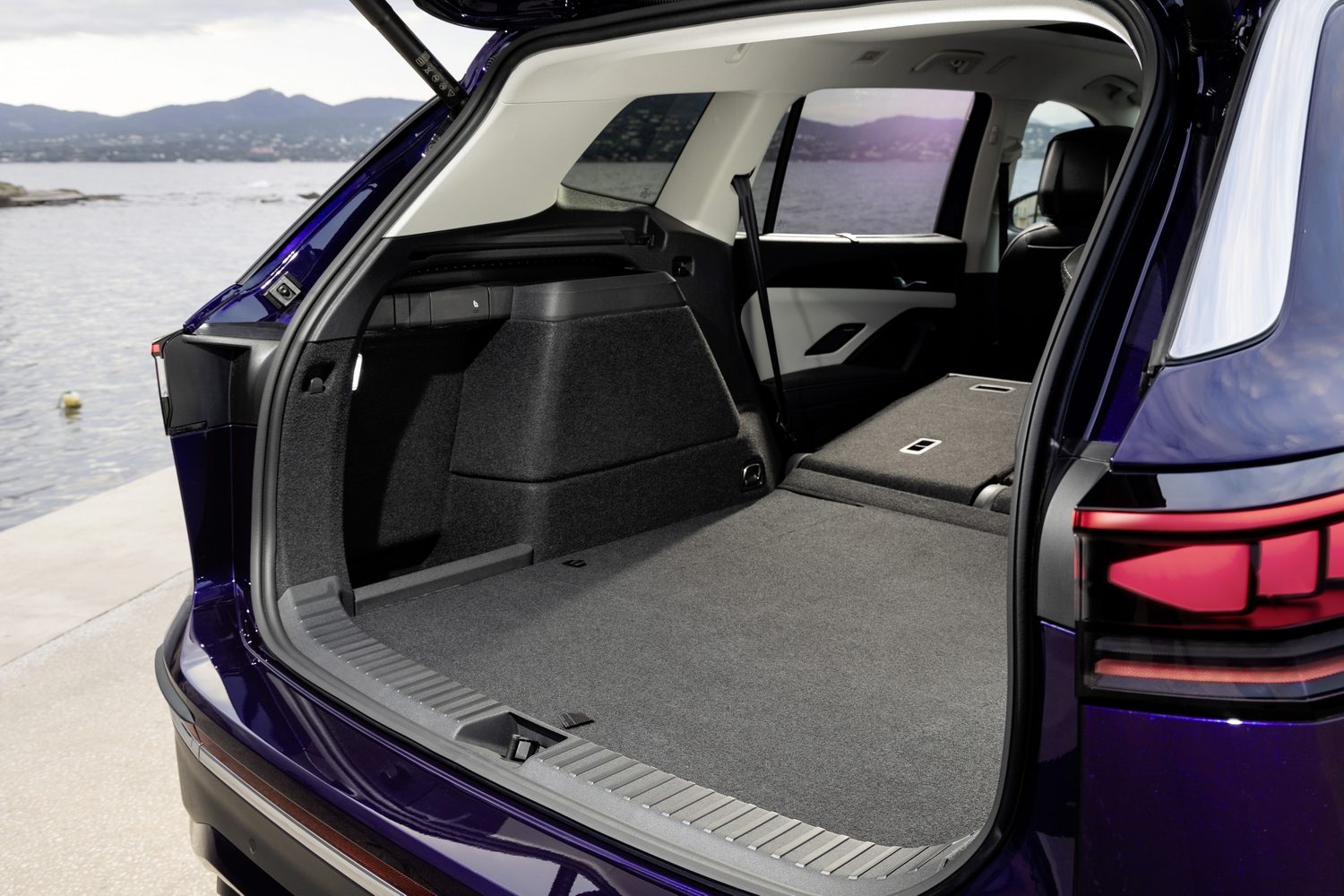
Instead, the plug-in hybrid gets 705 litres of boot space - the smallest of the Tayron range - which can be increased to 1,915 litres by folding down the rear seats. On the flipside, this Tayron PHEV has much more boot space than the equivalent Tiguan eHybrid, which accommodates 490-1,486 litres.
Performance of the 2025 Volkswagen Tayron eHybrid
• A realistic electric range
• Comfortable rather than exciting
• DC fast charging available
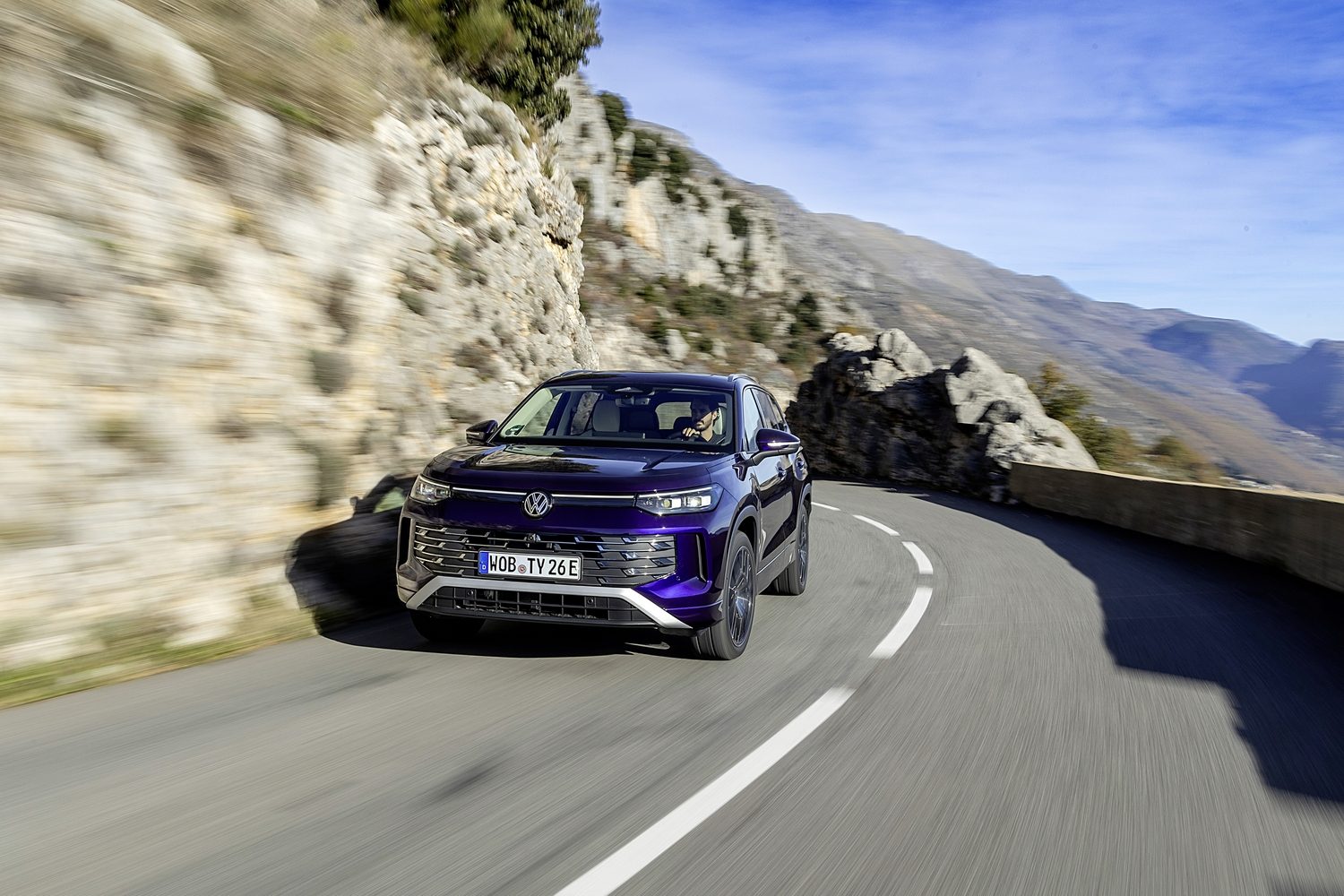
We're now into an era of plug-in hybrids that serve a real purpose thanks to longer electric-only driving ranges. In the case of this Tayron R-Line, the 19.7kWh battery can provide up to 118 kilometres of purely electric driving according to official figures. That of course will fluctuate depending on how you drive, the number of people on board and the speed, but even in some of the more challenging situations, virtually all average everyday journeys could be completed without ever having to rely on the petrol engine.
The 85kW (115hp) electric motor has enough pulling power to easily cope with typical urban driving, and it will even get the Tayron up to motorway speeds, though doing so for any period will shorten the electric range.
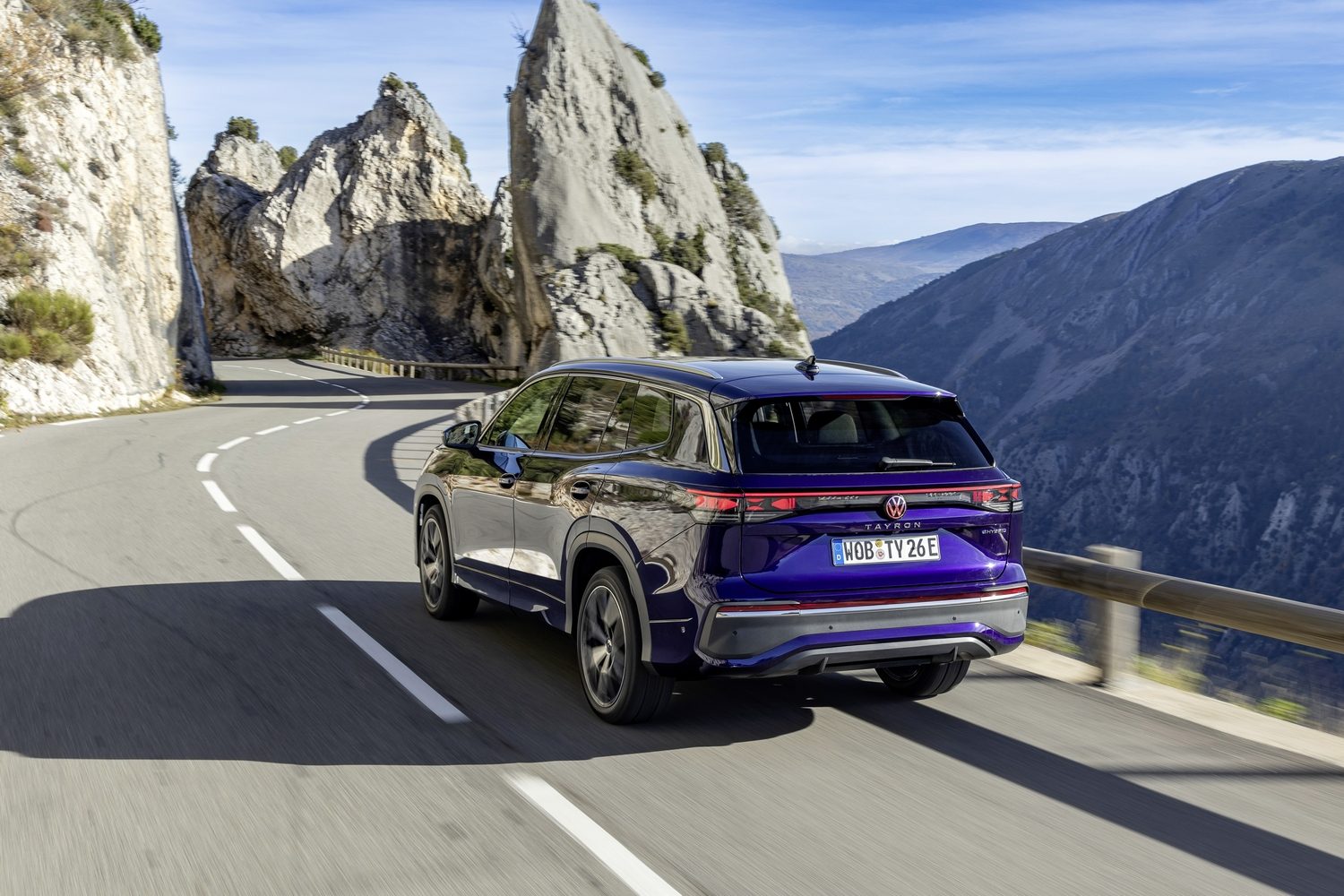
When the battery runs out of juice, the petrol engine usually politely enters the conversation and picks up the slack. It can become more vocal when your right foot demands more performance. Still, it's an acceptable alternative to the silent electric motor if you stick to more casual driving in urban and city settings. Both can also work in concert when needed, producing a combined 204hp output with 350Nm of torque.
Usefully, the PHEV system supports 50kW DC fast charging in addition to the 11kW AC rate. That's useful if you're undertaking a longer journey and want to charge up on a comfort break, though we suspect home charging will account for almost all charging sessions.
While optional on the diesel variant, the Tayron eHybrid gets Volkswagen's DCC Pro adaptive chassis control as standard. This latest system uses two-valve shock absorbers to alter and enhance how the Tayron drives, now reacting faster than previous versions to help smoothen out the ride comfort beyond the capabilities of a passive setup.
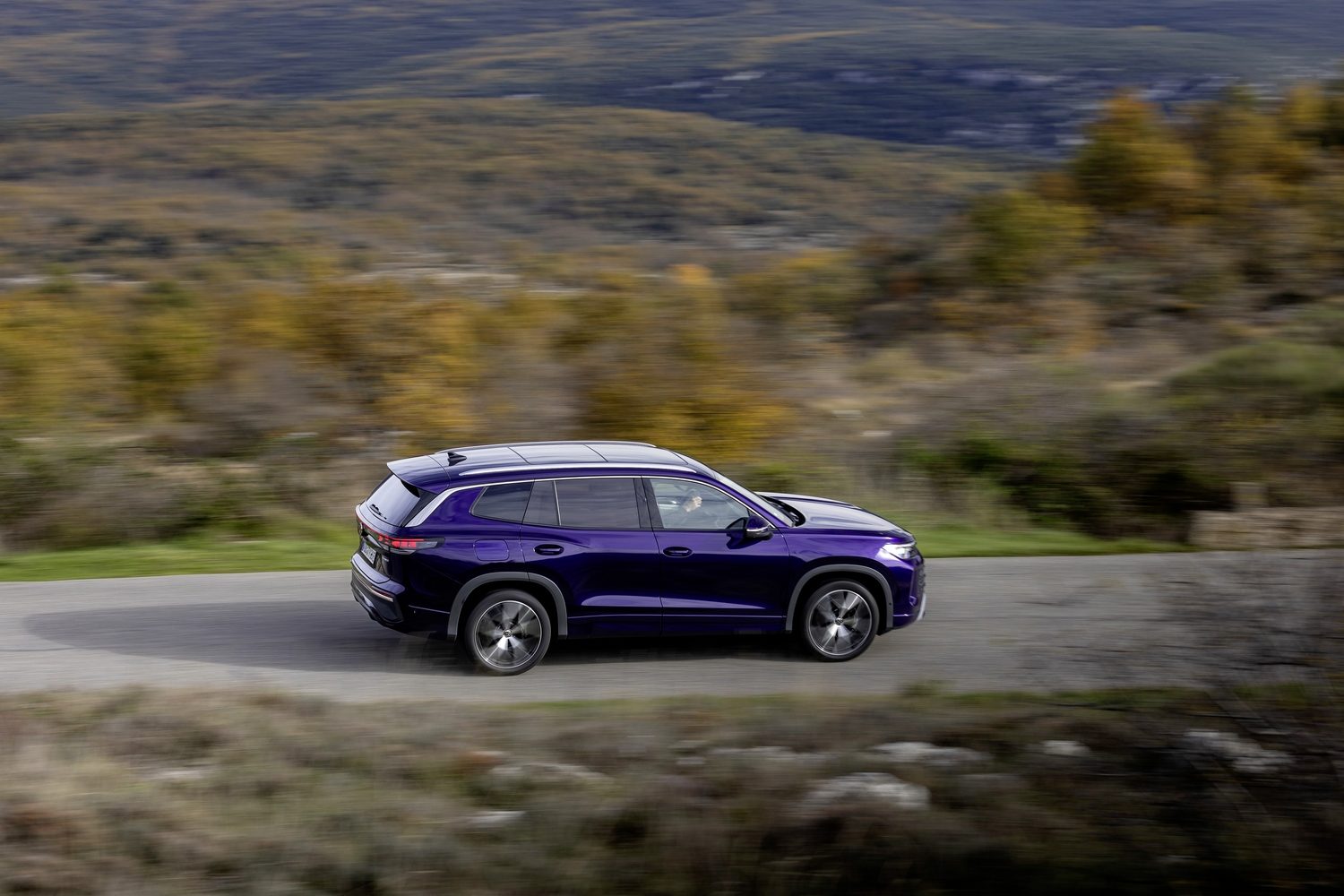
It does provide a comfortable driving experience, and even though the hybrid system is hauling a little more weight, it copes with everything well.
In general, the Tayron is comfortable and refined. Volkswagen's engineers specifically targeted these aspects when developing the car, and they've done a decent job of it. Besides the advanced suspension setup, there's well-placed sound insulation and thicker glass in the front section sandwiched with sound-insulating film to help block out undesirable noise from the cabin.
The result is a civilised and comfortable car, as you'd expect from the brand.
Running costs of the 2025 Volkswagen Tayron eHybrid
• Up to 118km electric range
• Potential for very low fuel costs
• Needs to be plugged in regularly

If you want to reduce your daily running costs with the Volkswagen Tayron eHybrid, you'll need to have a home charger installed and make good use of it, ensuring that the hybrid battery is always topped up so you can make the most of its electric range.
Depending on the specification, you could get as much as 126 kilometres from a single charge, though if you opt for the R-Line version tested here, you'll get slightly less at 118 kilometres, partly due to its larger alloy wheels. With a fully charged battery and a full petrol tank (it holds only 45 litres), the Tayron eHybrid has a potential driving range of 850 kilometres without stopping.
Volkswagen's combined fuel consumption figure is an impressive 0.4 litres/100 kilometres, but that's done using the WLTP cycle, which is only 30 minutes long and doesn't give the entire picture of realistic fuel economy.
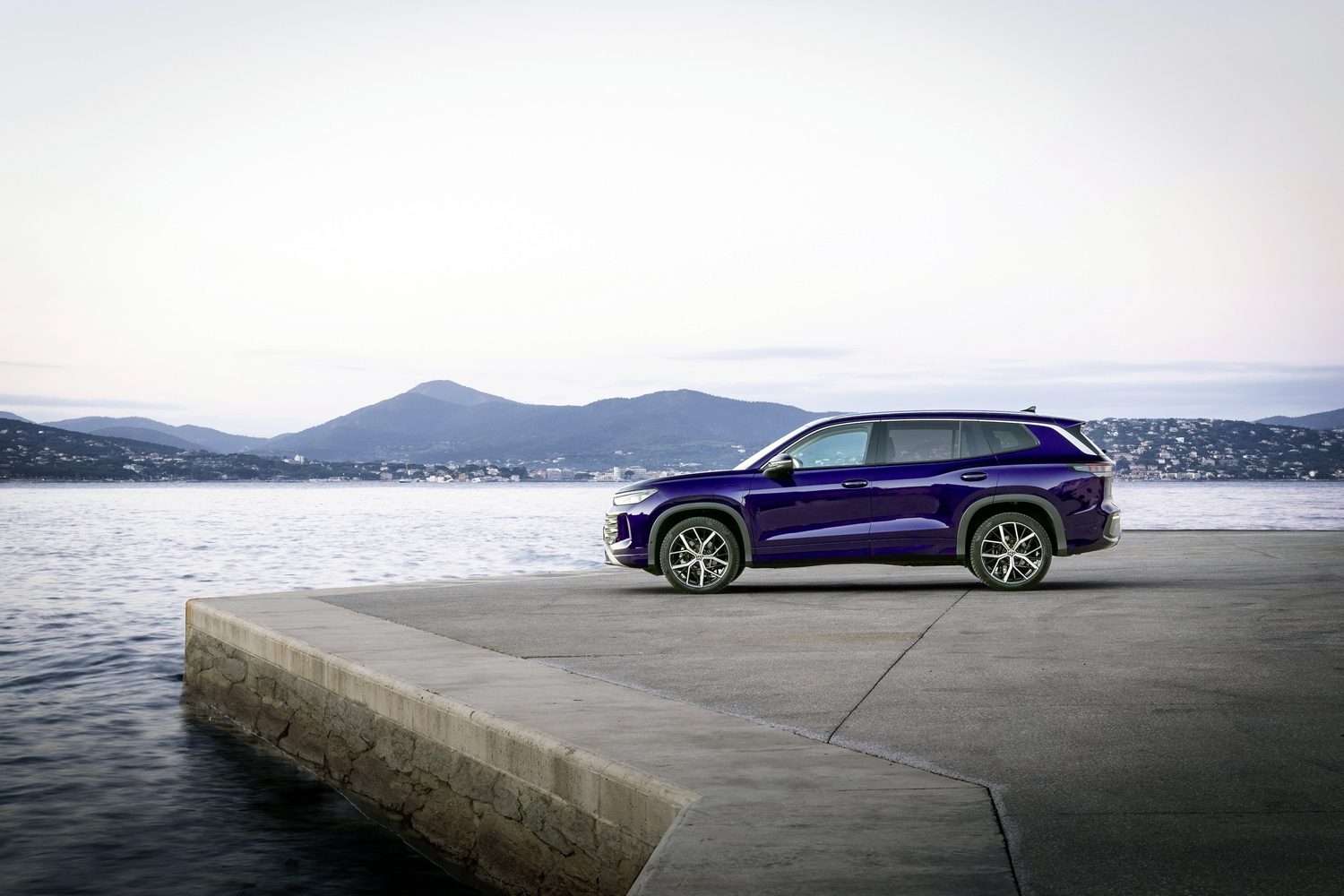
Once the battery dispenses its charge, you're hauling around that extra weight, increasing fuel consumption with what is already a small capacity petrol engine. Driving it consistently without charging the battery will negate any potential cost savings, so it's best to try to use the petrol engine as infrequently as possible if you want to get the best from the Tayron eHybrid.
Irish Pricing & Rivals of the 2025 Volkswagen Tayron eHybrid
• Starts at €56,690
• PHEV R-Line still costs less than the diesel
• The 15-inch display will cost extra
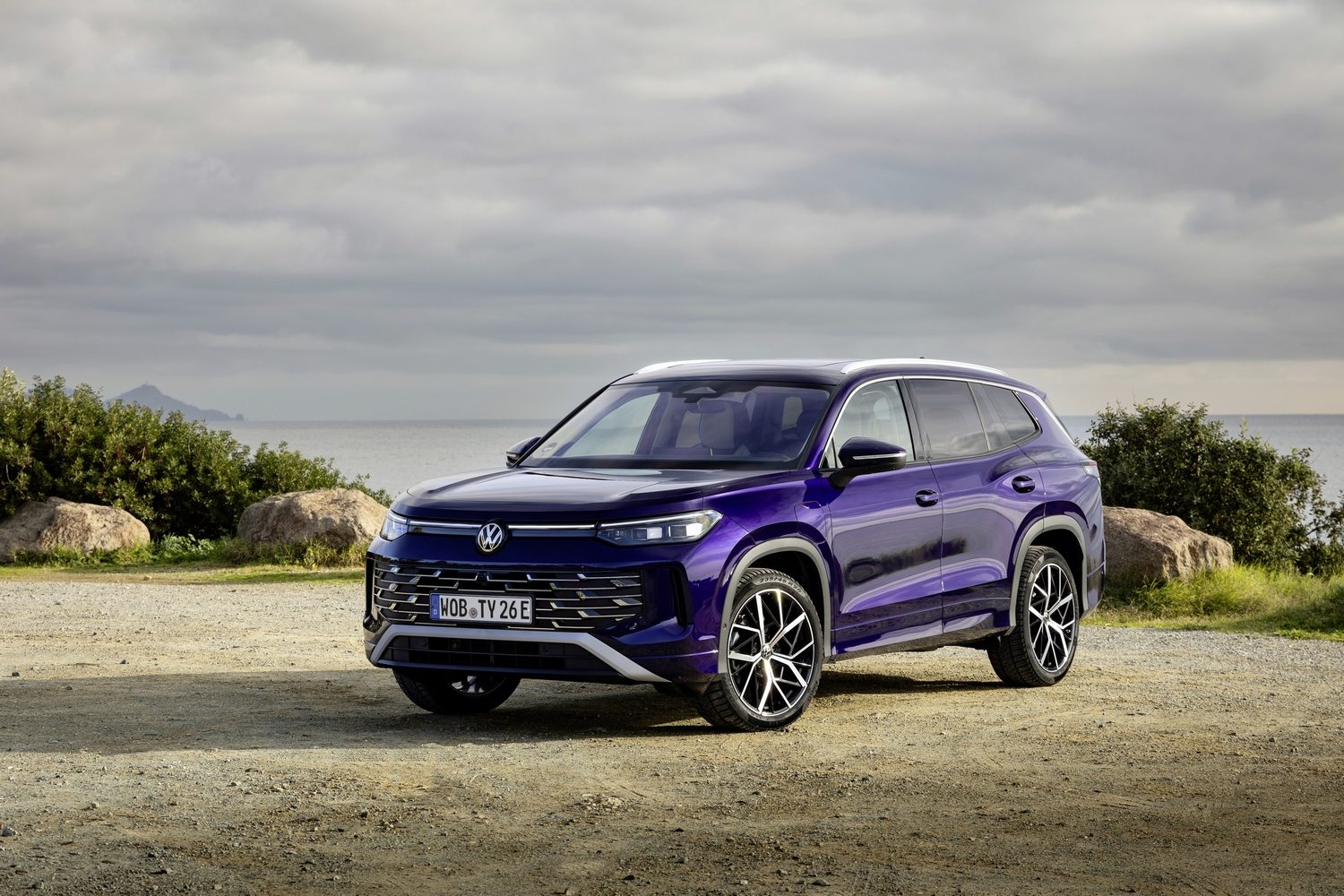
The Volkswagen Tayron range starts at €56,690 in Ireland, and that gets you the 2.0-litre TDI Life model. There is no Life specification for the Tayron eHybrid, which instead starts its offering with the mid-grade Elegance specification. The good news is that it costs from €57,590, just €900 more than the entry-level diesel, but you also move up to a higher trim grade. That same move in the diesel carries a €9,025 price walk.
Irish pricing for the Tayron eHybrid R-Line starts at €58,245, while the R-Line Edition 75 - a specific version marking the company's 75th anniversary in Ireland - costs €60,145. This specification adds metallic paint, tilting and sliding panoramic sunroof, a head-up display, Park Assist with memory feature and Park Assist Pro.
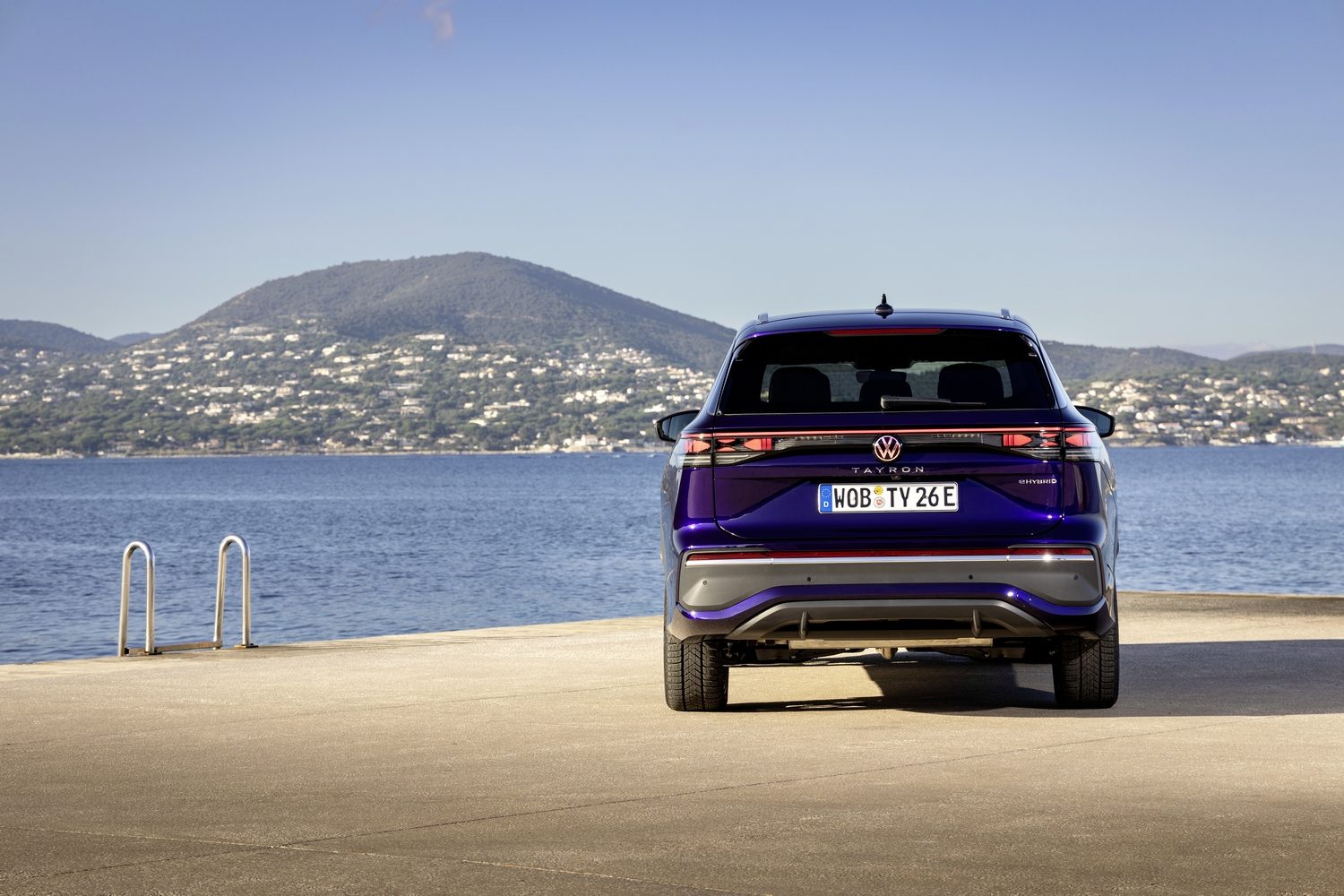
Verdict - Should You Buy the 2025 Volkswagen Tayron eHybrid?
There are many positives to the Tayron eHybrid, though the central sticking point is that it doesn't offer a seven-seat option with the PHEV powertrain. In this case, the net result is almost identical in performance and running cost to the smaller, more affordable Tiguan eHybrid.
With that in mind, it comes down to the additional boot space, alternative styling and overall size, which differentiates the two SUVs. We do like how polished the driving experience is and, of course, that electric range. The Tayron feels like Volkswagen is getting back to doing what it used to do very well.
FAQs About the 2025 Volkswagen Tayron eHybrid
How many child seats fit in the Volkswagen Tayron eHybrid?
In total there are three ISOFIX points in the Volkswagen Tayron. These are in both the outer rear seats and the front passenger seat.
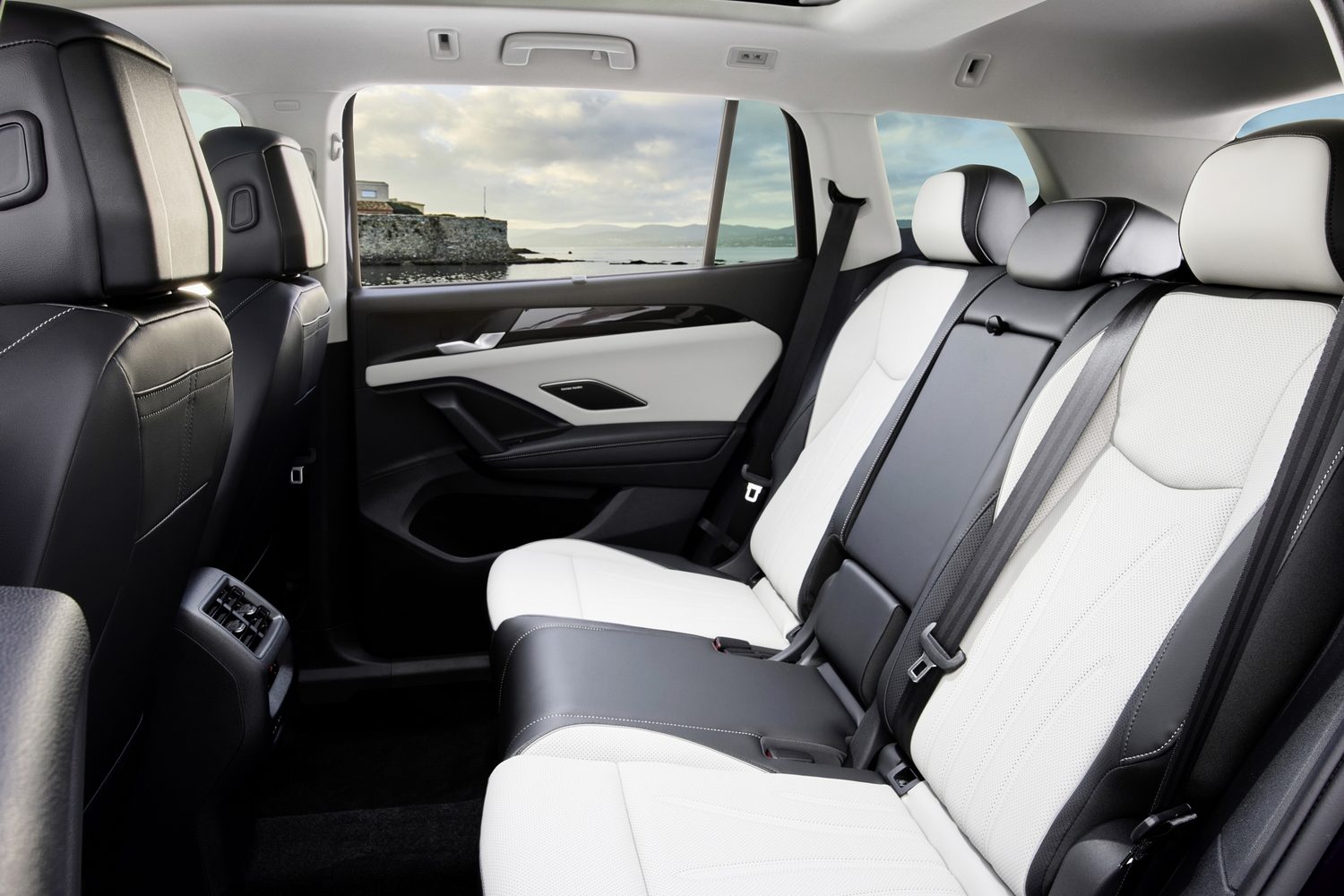
Is there a petrol version of the Volkswagen Tayron available?
Volkswagen produces several petrol variants of the Tayron, but these are currently not offered in Ireland. There are two versions using a 2.0-litre turbocharged four-cylinder engine, with outputs of 204hp and 265hp, both mated to a 4Motion all-wheel-drive transmission. There is also a 150hp 1.5-litre 48-volt mild-hybrid that drives its front wheels.
Why isn't there a seven-seat PHEV option?
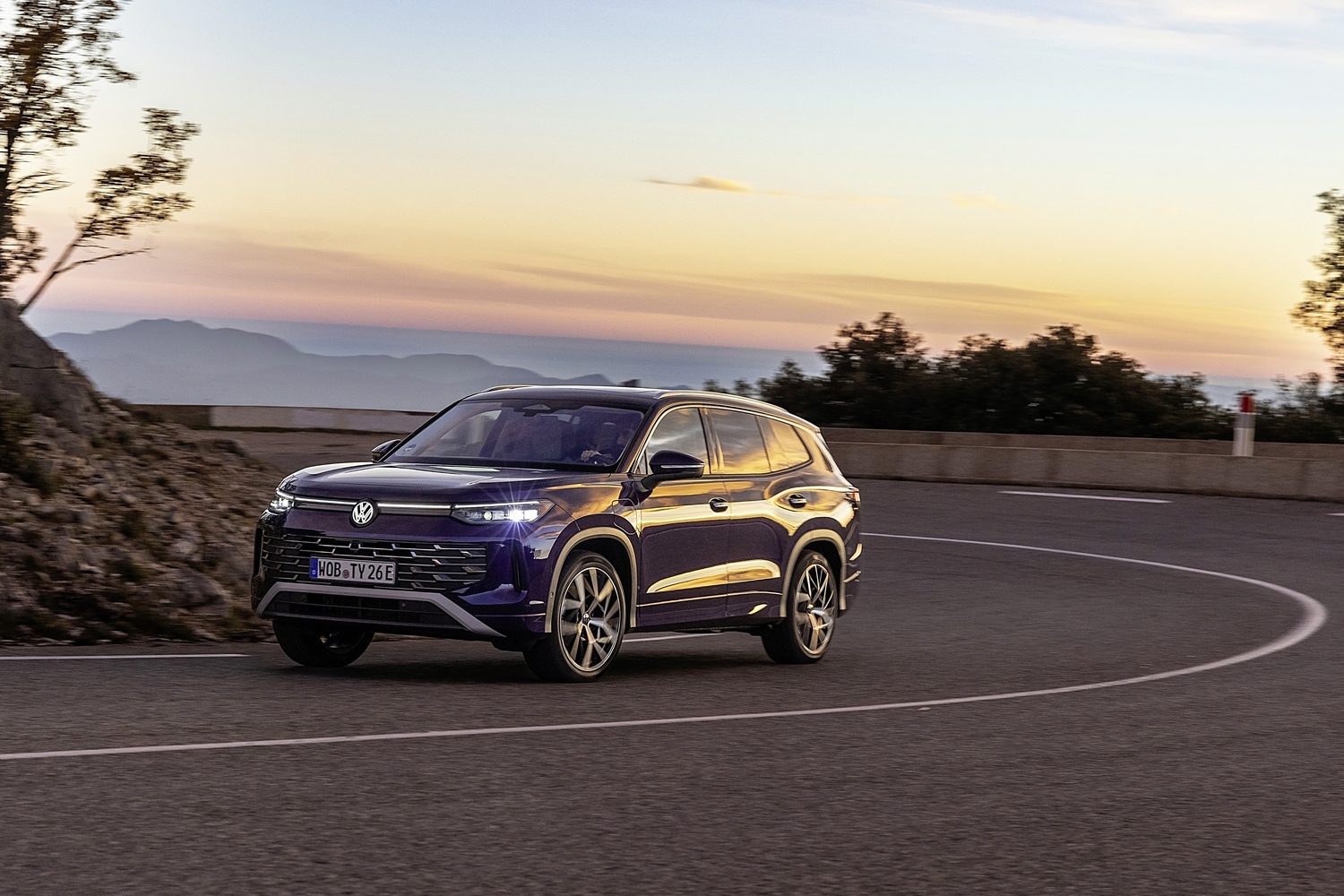
Due to the plug-in hybrid battery's size and location beneath the rear seats, there is not sufficient room to install the third row of seats in a way that would still enable them to fold down into the floor when not in use. Passenger headroom in the rearmost row would also be further restricted.
Want to know more about the Volkswagen Tayron eHybrid?
If there's anything about the Volkswagen Tayron eHybrid we haven't covered, or you'd like advice on choosing between it and other cars, you can access our (completely free) expert advice service via the Ask Us Anything page.

